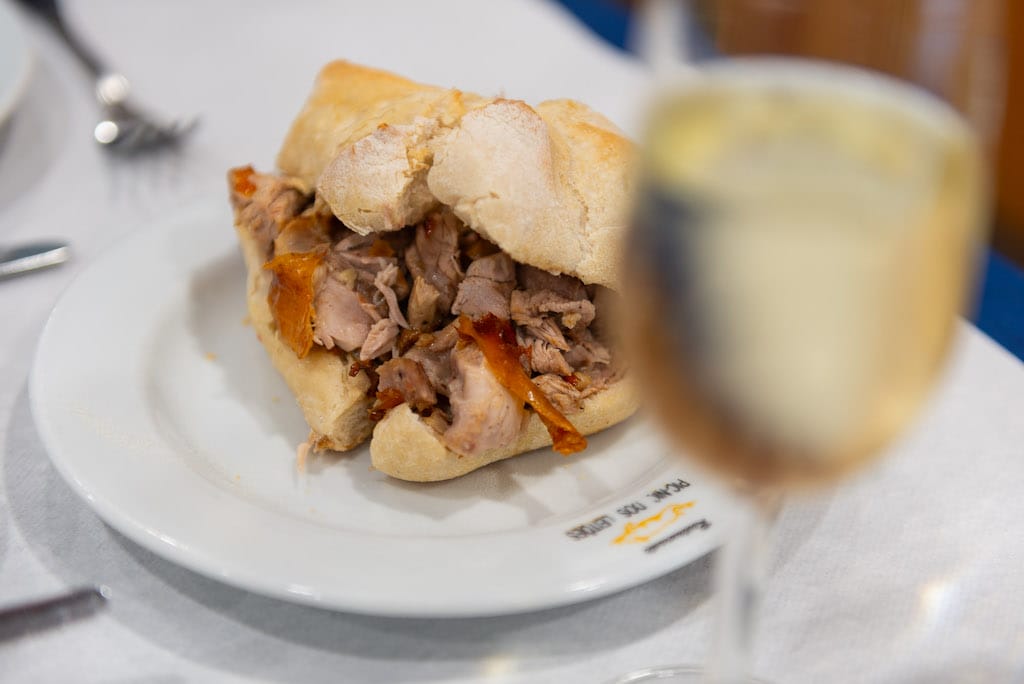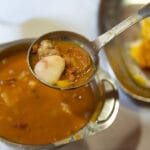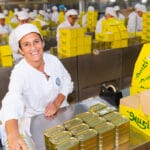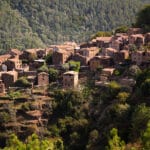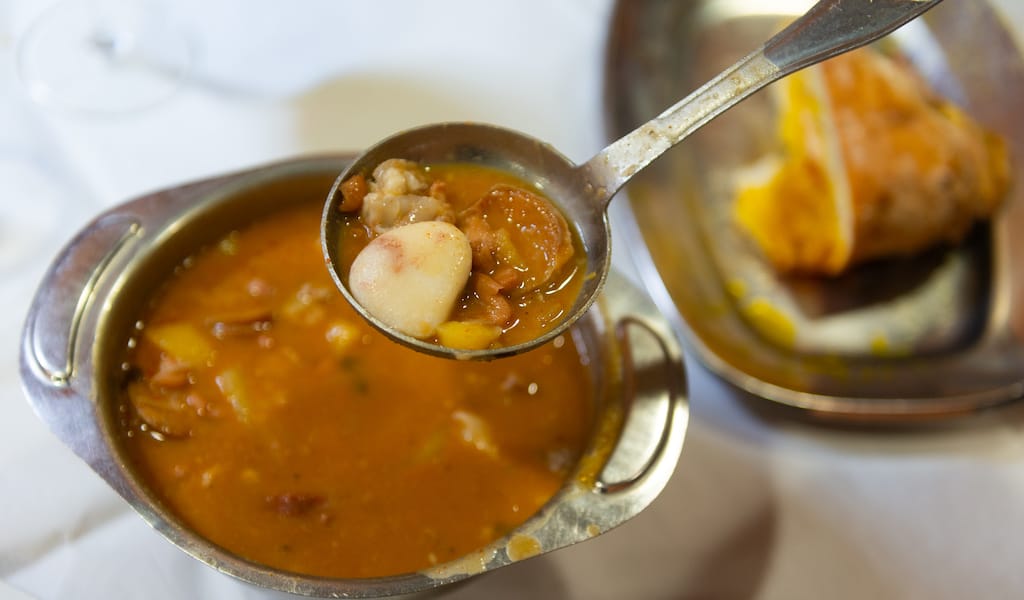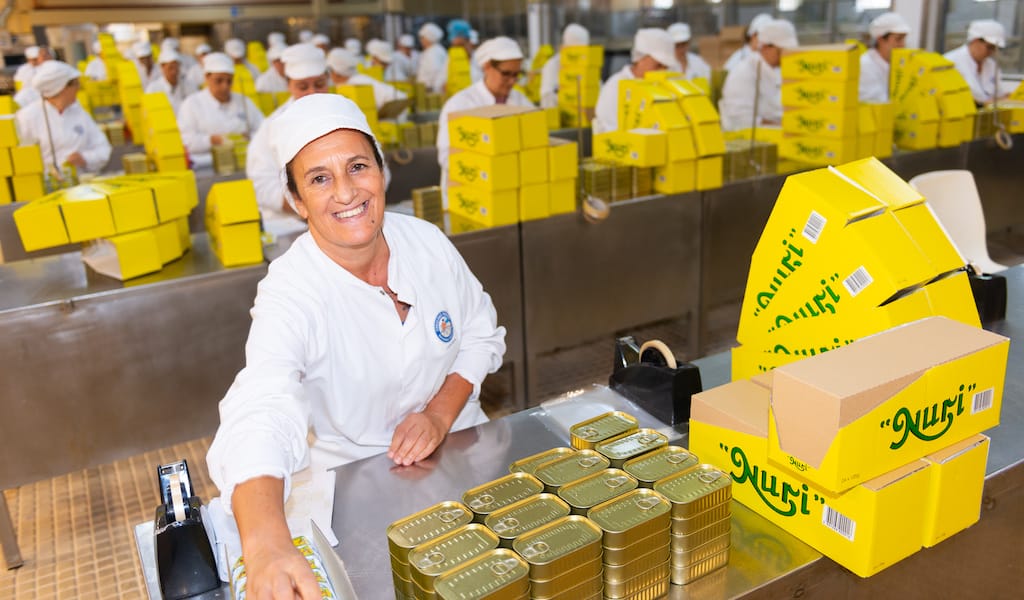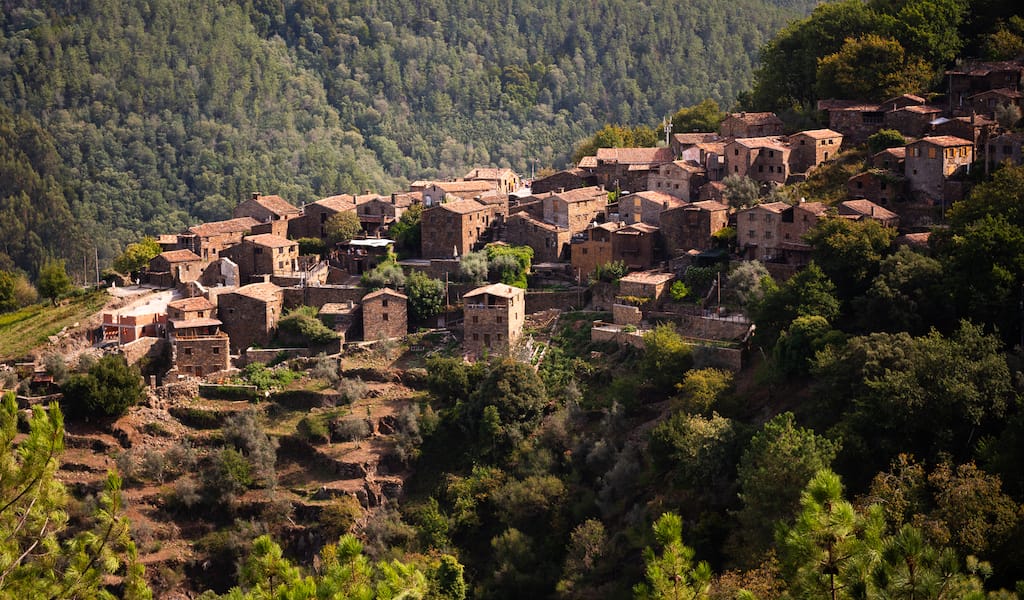At first glance, there’s not much to see in Mealhada, a town in Portugal’s central inland Bairrada region about an hour’s drive south of Porto. If there is a main feature here, it’s probably the EN1, the country’s original north-south highway, which slices the town in half, providing a conduit for a seemingly never-ending parade of large, noisy trucks.
Yet the town’s roadside signs reveal something else: “Rei dos Leitões,” “Pedro dos Leitões,” “Virgílio dos Leitões,” “Meta dos Leitões,” “Hilário Leitão.” Mealhada is ground zero in Portugal for leitão, roast suckling pig. Additionally, head in just about any direction from town, and within minutes you’ll find yourself among the patchwork vineyards of Portugal’s smallest yet perhaps most geeked-out-about wine region. Bairrada, upon closer inspection, is a crossroads for more than just trucks.

We wanted to explore this junction of pork and wine, and the obvious starting place is Mugasa. Bairrada’s tradition of leitão is thought to stem from a monastery, the dish having gained popularity more than two centuries later in the 1940s when it was sold in sandwich form to motorists racing along the EN1. But today this 40-year-old restaurant, located in the workaday town of Sangalhos, is hands-down Portugal’s most famous destination for suckling pig. Ricardo Nogeuira, Mugasa’s second-generation pig roaster, has granted us access to his kitchen, and greets us in front of four wood-burning ovens, occasionally shining a spotlight on the spits to check their progress. He has been roasting suckling pigs here for 30 years, having taken over from his father Álvaro seven years ago.
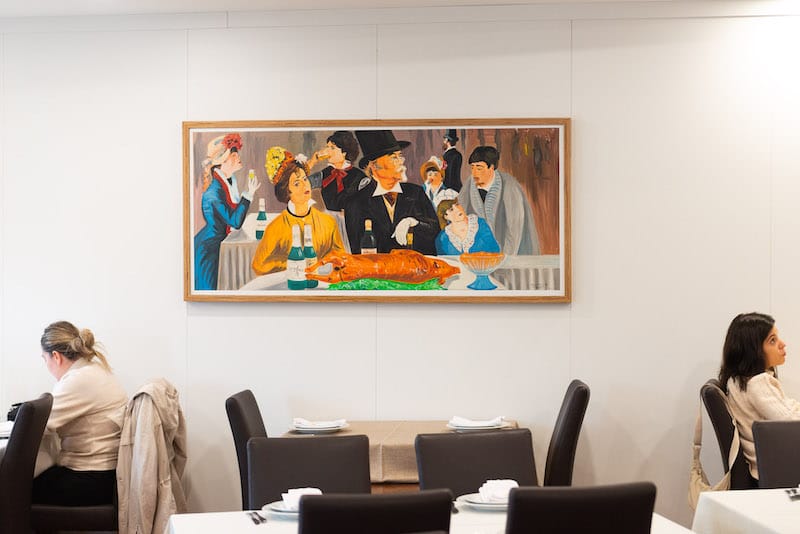
“In Bairrada, all the pigs are made the same way,” he tells us, referring to the roasting style in which whole piglets are skewered on a spit, a contrast with the splayed style favored in Negrais, Portugal’s other destination for suckling pig, located just north of Lisbon. He tells us that he chooses piglets that are six weeks old, with long, narrow bodies and lots of fat, and roasts between 150 and 200 of them per week. We ask Ricardo how Mugasa has become so famous, and after diplomatically referencing subtle differences in terms of roasting style, ingredients and finished product, he adds, “In soccer terms, there are eleven players, but sometimes only one person scores the goals.”
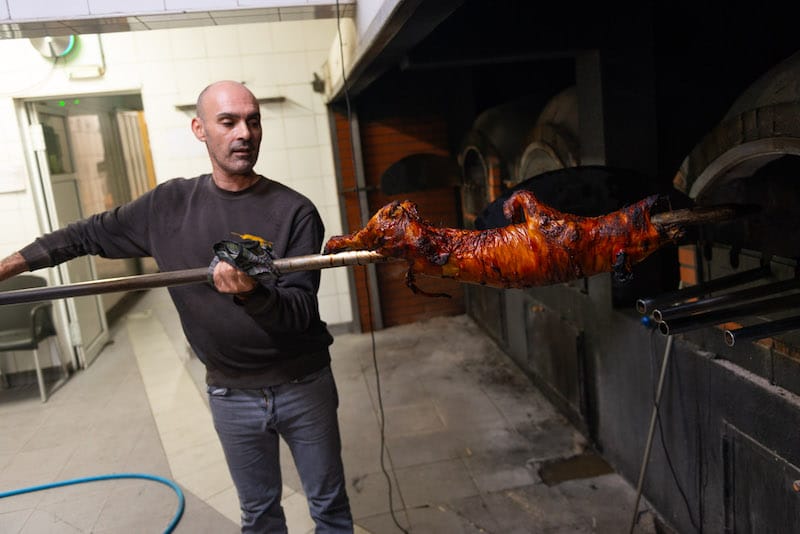
We return to the dining room where a half piglet – the minimum order at Mugasa – is presented on a long, glass tray, cut into neat squares. The meat is tender to the point of falling off the bone, the skin is crisp, the belly sections rich with fat. The pork is paired with crispy, house-made chips; a lard-based, salty, garlicky and peppery sauce; and orange slices and a green salad, the latter acidic elements meant to cut through all that richness and fat.
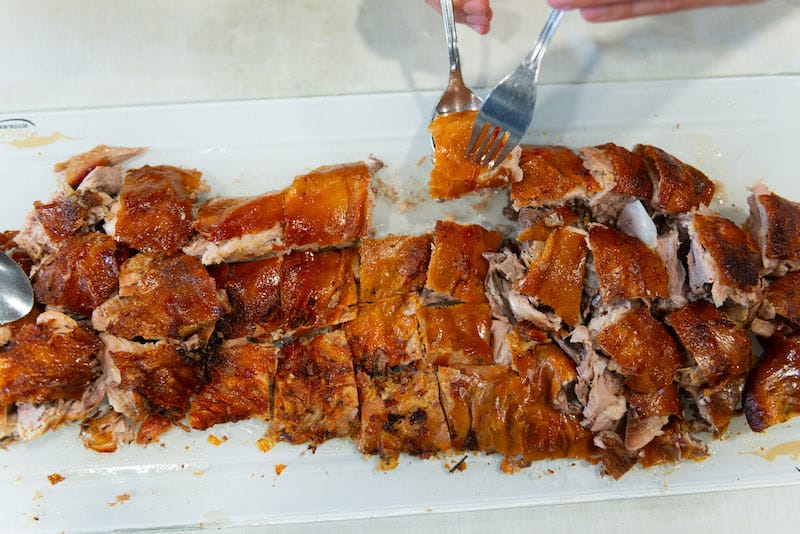
It is an utterly delicious meal, but also, quite frankly, an utterly indulgent and decadent one. If faced with a wine pairing, most of us would probably reach for a fancy red. But the people of Bairrada know otherwise.

“The tannins in red wine sometimes don’t go well with fat,” says Mário Sérgio Alves Nuno. He’s the winemaker at Quinta das Bágeiras, a respected winery located a short walk from Mugasa. We ask him what he would pair with roast suckling pig, and without hesitation he replies “Sparkling. The bubbles clear the fat from your palate.”
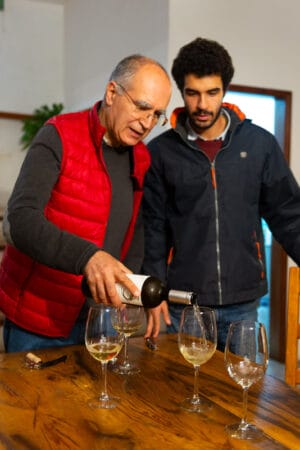
Sparkling wines have become the go-to pairing with suckling pig in Bairrada, and are sold at every restaurant that has a spit. And winemakers such as Mário have made Bairrada Portugal’s preeminent region for sparkling wines. Yet this had little to do with food pairings.
“The region is cool, and the grapes have a lot of acidity,” says Paulo Sousa, the winemaker at Sidónio de Sousa, another respected local winery, explaining that these are factors that led to Bairrada’s high-quality sparkling wines.
Mário, Paulo and other producers in Bairrada employ the so-called “traditional method” to make a variety of sparkling white, rosé and red wines, essentially following the same time-consuming, labor-intensive steps as winemakers in Champagne. Although the local houses don’t have the quality of grapes or the financial resources to age their wines as long as the famous houses in Champagne, Mário is confident that the standard in Bairrada is much higher than that of the syrupy mass-market brands from France. And with many Bairrada sparkling wines selling for under 20 euros, what’s undeniable is that they’re a terrific value.
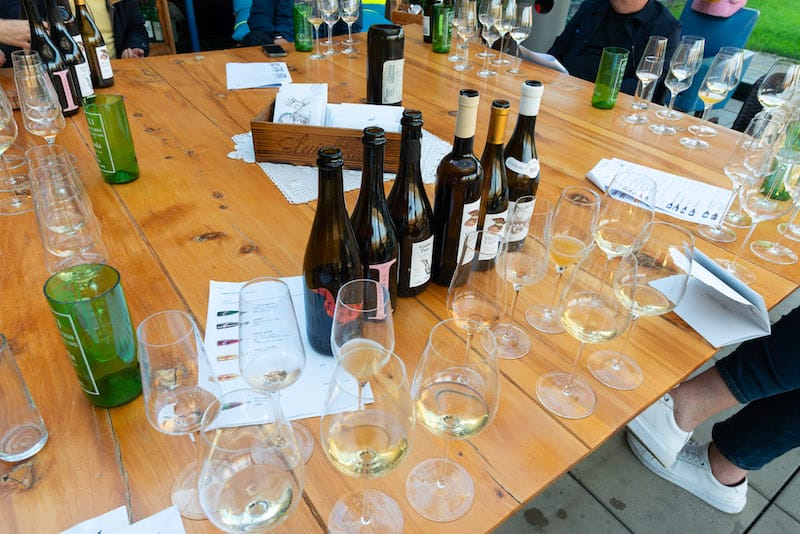
We’re able to witness the traditional method firsthand at Adega Luís Pato. The eponymous, second-generation winemaker is one Portugal’s oenological superstars, having almost single handedly put Bairrada on the map. We’ve crashed a visit-in-progress, and are escorted to the winery’s cave, where workers are operating a series of machines that in a matter of seconds disgorge – that is, remove sediment from – add sugar to, cork, and attach the wire cages to bottles of sparkling. Only a few minutes previously, we had tasted Luís Pato’s fragrant, almost raspberry-like 2013 Espumante “Informal,” a blanc des noirs, or sparkling white wine, made with red grapes, in this case the Baga, one of the most important varietals in Bairrada.
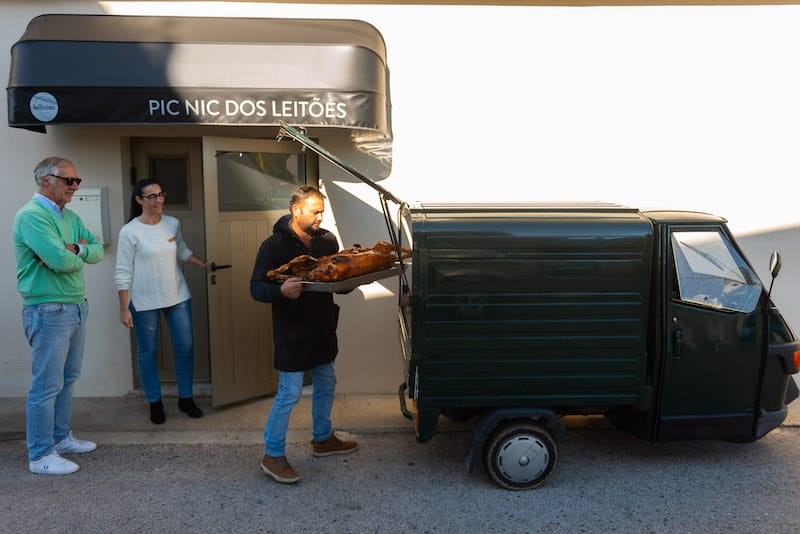
Back in Mealhada, with three tastings and some background knowledge under our belts (in addition to wineries, we’d also visited the Bairrada Wine Museum, in Anadia), we’re keen to put this combination of suckling pig and fizzy wine to the test yet again. We’re at Pic-Nic dos Leitões, one of those restaurants so close to the highway, one runs a risk of getting smacked by a truck if exiting the door after too many glasses of sparkling wine. We order a small plate of suckling pig, a suckling pig sandwich and arroz de cabidela de leitão, a dish that combines suckling pig offal, blood and rice. We spot customers drinking small bottles of wine with a blue label, and ask our waitress about them.
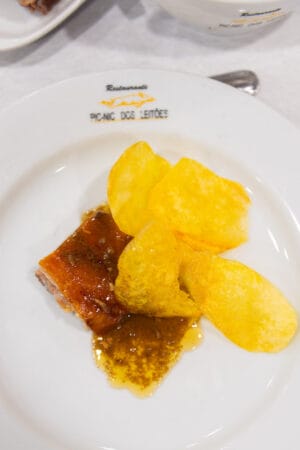
“Is that a sparkling wine from Bairrada?”
“Of course. It’s from Anadia, the capital of sparkling wine in Portugal!”
We order a bottle, and like magic, the acidity cuts through all that fat, the bubbles giving our palates a chance to reset between bites. It’s a genius pairing, but we’re also reminded of something that Ricardo Nogeuira of Mugasa had told us the previous day: “The soil [in Bairrada] is clay, the oven is made from clay, we use old vines to roast the piglets, and we serve the wine with the piglets,” a cycle of ingredients and tradition that simply isn’t apparent from the EN1.
Austin BushAustin Bush
Published on February 07, 2024
Related stories
January 19, 2024
LisbonIt’s an early example of guilt tripping. The story goes that a monk arrived in a Portuguese village, hungry and clever. He grabbed a rock and carried it door to door, claiming that it was his only ingredient, asking people if they would be kind enough to supplement it so he could make a meal.…
December 7, 2023
PortoMatosinhos, it could be said, has seen better times. In its heyday, the semi-industrial-feeling port city just north of Porto was once home to 54 fish canneries. Today, only two remain. Along the city’s wide, empty-feeling streets, some of the city’s former factories and their graceful Art Nouveau facades have been reappropriated as other businesses…
November 23, 2023
Porto“It’s not enough,” says the waiter at O Pascoal. We had inquired if one dish would be sufficient for three people, and his reply is immediate, firm and confident. We take his advice, order another, and the two dishes are easily enough for six people (we are three). We are in Fajão, an aldeia do…







































